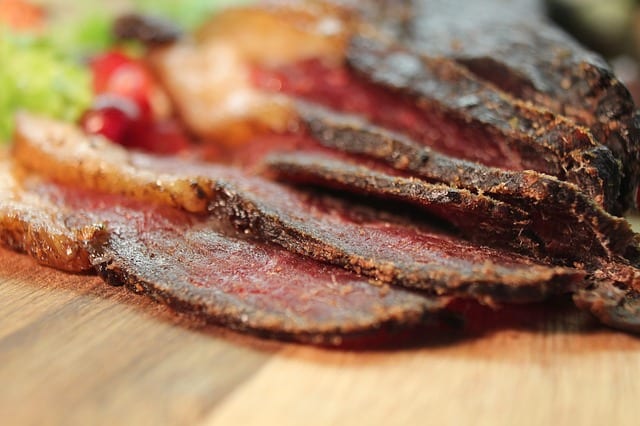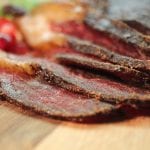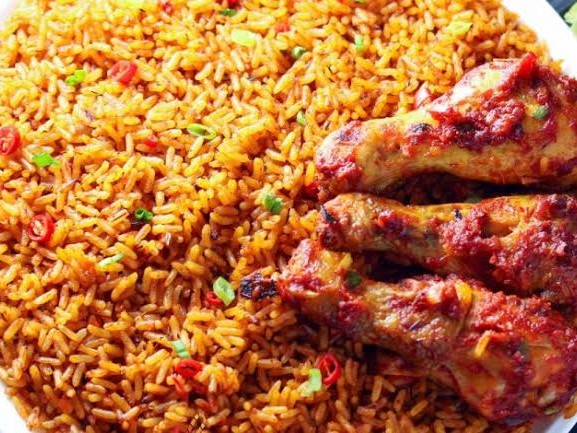Share this!
Biltong: All About This Popular South African Treat
Biltong, which is a type of dried and cured meat, is a popular treat made and enjoyed in South Africa. It is also extremely popular in other African countries including Botswana, Zimbabwe and Namibia. What makes biltong so popular is certainly not only because it is so delicious, but also because it is a nutritious and healthier alternative to other snacks such as chips, sweets, chocolates and the like.
What Nutritional Value Does Biltong Have?
Biltong’s nutritional value lies therein that it is a source of protein and it is extremely low in carbohydrates. Unlike other snacks, biltong contains no carcinogenic ingredients.
Where Does Biltong Come From?
While biltong is a South African food that is made from dried beef and game meat, the world itself is Dutch. “Bil” means buttock and “tong” means strip. The treat is very similar to the more primitive Dutch tassal. In short, it is just a strip of tasty dried meat.
Biltong, as it is known in South Africa, is a delicacy that is believed to have been inherited from the pioneering South African ancestors who dried out meat during their trek across the continent. While biltong has an interesting history, it also has a great future as the biltong and “droë wors” industry in South Africa is massive and caters to both locals and tourists.
Why Doesn’t Biltong Rot?
Imagine buying your favorite snack and knowing that it will never expire! Well, that is what the experience is like for all biltong lovers. Biltong is cured and dried in such a way that it is protected from potential contamination. Simply put, it can never go bad. The meat is spiced with a blend of salt, sugar, coriander seeds and vinegar. Of course, that does not mean that you can buy your biltong now and expect to enjoy it in 5-years time. While the meat itself will not spoil, the longer you leave it, the less fresh and flavorsome it will be.
When is Biltong Ready to Eat?
If you are making your own biltong or drying your already supplied biltong, you might not know when it is ready to eat. The drying time of biltong will vary depending on the type and style of biltong being made. For instance, wet biltong will be ready to eat far quicker than a very dry biltong style. Standard biltong varieties that are slightly soft in the center and dry on the outside must typically dry for 4 to 5 days before it is ready to eat.

How is Biltong Different to Jerky?
Many people traveling overseas and trying to explain what biltong is to foreigners will describe biltong as a type of jerky. Biltong and jerky are actually very similar in that they are both dried and cured meats. However, jerky is traditionally dried with salt and unlike biltong; it is not cured with vinegar. Jerky is also often smoked whereas biltong never is.
Which Cut of Beef is Best for Biltong?
Beef is often the preferred type of meat to make biltong from as it is readily available and also far more affordable than game. Organic, grass-fed (hormone free) beef is great for making biltong with, but the cut of beef is an important factor too. Biltong makers often recommend using lean pieces of beef with minimal marbling. Marbling is those white pieces or streaks that you will often see in a piece of meat. If you are making a large piece of biltong, choose a piece with a strip of fat on the outer side of the cut. While just about any cut with little marbling can make a decent biltong, the most flavorsome will be fillet, sirloin or steaks that are cut from the hip, including topside and silverside.
What is the Best Biltong Recipe and How to Make It?
Do you want to make your own biltong? Here is a great biltong recipe to try!
Home-Made Biltong

Do you want to make your own biltong? Here is a great biltong recipe to try!
Ingredients:
- 2 kg beef fillet
- 150 ml red wine vinegar
- 50 ml Worcestershire sauce
- 2 tablespoons of coarsely ground coriander seeds
- 50 g fine sea salt
- 150 g brown sugar
- 1 teaspoon bicarbonate of soda
Method:
- Cut the beef into 4 cm thick strips
- Pack the strips into a small bowl
- Add the vinegar and Worcestershire sauce and let it rest for 30 minutes
- Mix the coriander and pepper in a bowl
- In a separate bowl, mix the bicarbonate of soda, salt and sugar
- Remove the meat from the marinade (keep it for later) and add it to the bowl of spices
- Mix until all the meat is coated
- Cover the meat strips in the salt and sugar mixture and leave to stand for 5 hours
- Remove the meat from the mix and dip it back into the marinade for an extra 30 minutes
- Remove the meat from the marinade and use the vinegar to rinse the salt off the meat strips
- Squeeze all the moisture from the meat, roll it in the spices again, and then hang it for drying
- These strips can hang for 3 to 20 days depending on how dry you want your biltong
And that is how you make a delicious piece of biltong!
Want to learn more about biltong? Find out everything you need to know about biltong on Demand Africa today!






